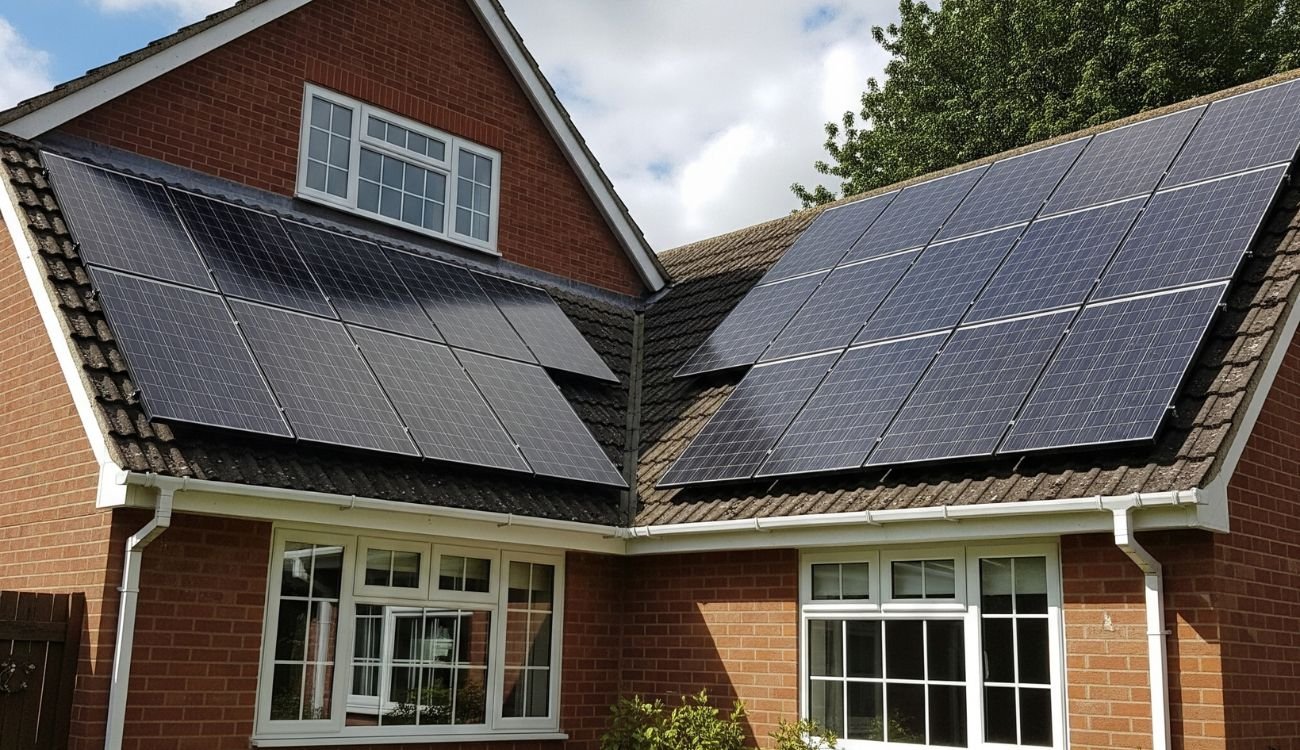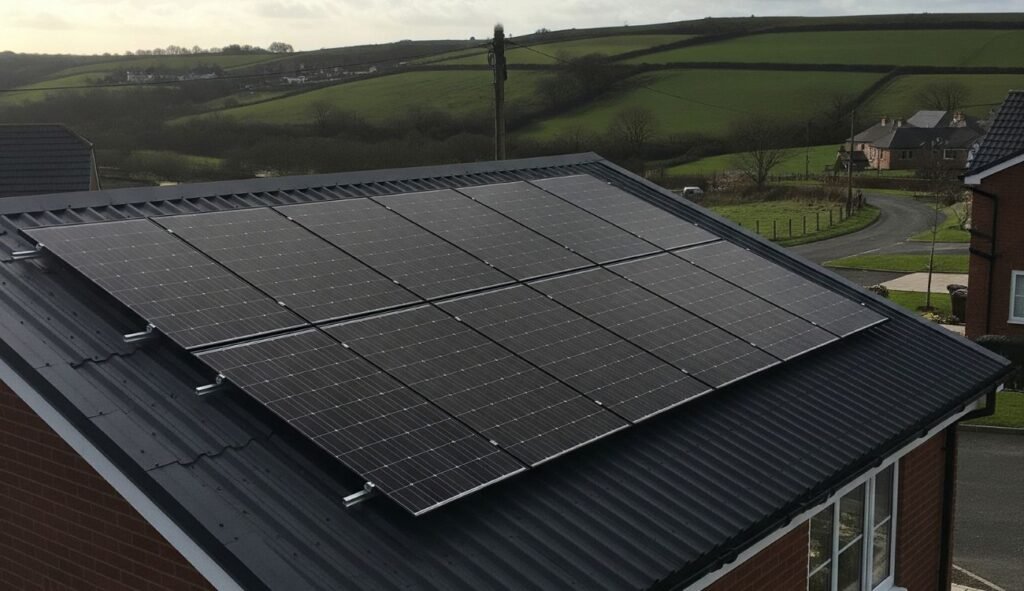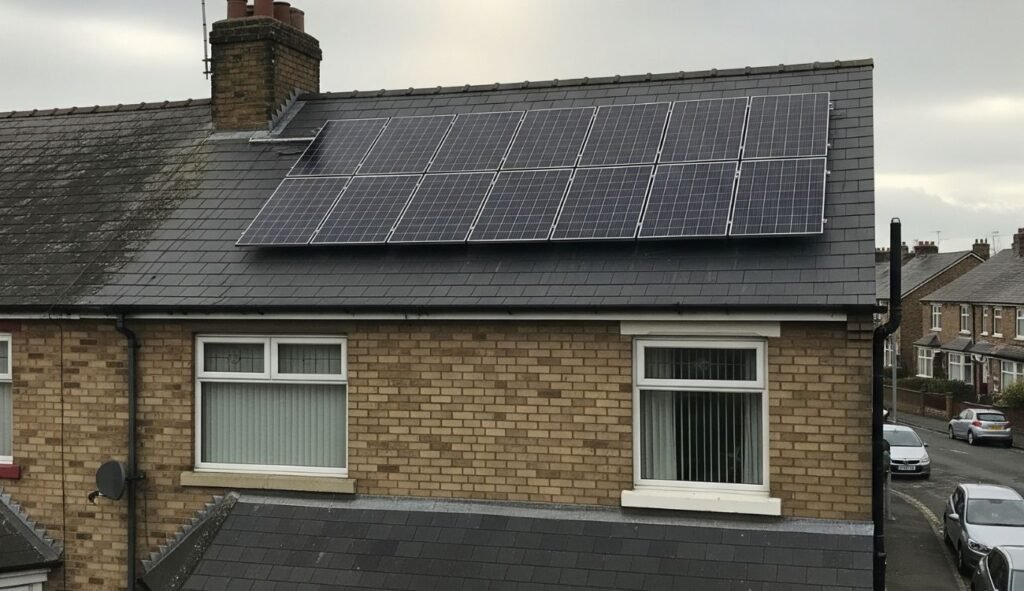Investing in solar power is a smart move for UK homeowners, landlords, and commercial property owners aiming to reduce their energy bills and carbon footprint.
But when it comes to installation, one common question is: can you put solar panels on both sides of a roof? The answer is yes, but it depends on your property’s orientation, shading, and energy goals.
This guide explores the feasibility, benefits, limitations, and expert considerations involved, helping you make an informed decision.
Can Solar Panels Be Installed On Both Sides Of A Roof?
Yes, solar panels can be installed on both sides of a pitched roof, provided both sides receive adequate sunlight. This configuration is particularly useful for properties with east-west facing roofs, allowing panels to capture morning and afternoon sunlight.
According to the Energy Saving Trust, the optimal roof orientation in the UK is south-facing, but east and west-facing roofs can also deliver strong performance throughout the day.
Combining both sides of the roof can increase your total solar generation capacity.
What Are The Benefits Of Installing Solar Panels On Both Sides Of A Roof?
Adding panels to both roof slopes can offer significant advantages:
- Maximised Generation – Capture sunlight from sunrise to sunset using both east and west aspects.
- Balanced Energy Production – Avoid overproduction at midday and spread generation evenly throughout the day.
- Futureproofing – Increased capacity for potential battery storage or EV charger integration.
- Roof Space Efficiency – Utilise the full area of your roof, especially important for smaller properties.
- Eligibility for Incentives – May improve returns from the Smart Export Guarantee (SEG), backed by Ofgem (Ofgem).
What Are The Drawbacks Of Installing Panels On Both Sides?
While dual-sided installation is possible, there are some practical and financial considerations:
- Cost – Doubling panels increases installation and hardware costs.
- Shading – Trees, chimneys, or nearby buildings can limit generation on one side.
- Roof Pitch – A less optimal pitch (below 30° or above 40°) on one side may reduce efficiency.
- Inverter Configuration – You may need a dual MPPT inverter or microinverters to manage separate roof orientations efficiently.
- Structural Integrity – The roof must be able to support the weight and wind load of panels on both sides.
It’s advisable to have a full site survey conducted by a certified installer like Future Heat, who provide solar panel installation across Tyne and Wear, Newcastle, and the wider North East region. They can help assess shading, roof strength, and system design.
What Roof Orientations Work Best For Dual-Sided Solar?
Not every roof is suited for solar panel installations, especially dual sided installations. Here is a quick breakdown:
| Roof Orientation | Suitability | Notes |
|---|---|---|
| South-facing only | Excellent | High generation, even with panels on one side. |
| East-West | Ideal for dual-sided installation | Capture morning and afternoon sun. |
| North-South | Less suitable | North-facing panels produce significantly less energy in the UK climate. |
East-west installations typically generate about 80-90% of the output of a south-facing system but offer a more balanced energy curve, which is useful for self-consumption.
What Type Of Inverter Do You Need For Panels On Both Sides?
When you install panels on different roof planes with differing sun exposure, it’s crucial to choose the right inverter setup:
| Inverter Type | Best Use Case | Benefits |
|---|---|---|
| Dual MPPT String Inverter | East-West or varied orientations | Allows tracking of two panel arrays separately for optimal performance. |
| Microinverters | Complex shading or multiple angles | Each panel operates independently, maximising efficiency. |
Selecting the right inverter technology is key to maximising ROI and ensuring long-term reliability.
How Does Adding Panels To Both Sides Affect Payback Period?
Adding panels increases the system size and upfront cost, but it can also improve your payback period, especially if your energy usage is spread throughout the day.
| System Size | Approx. Cost* | Estimated Annual Savings | Payback Period |
|---|---|---|---|
| 3kW (one side) | £5,000 – £6,000 | £650 – £700 | 8 – 10 years |
| 6kW (both sides) | £9,000 – £10,000 | £1,200 – £1,400 | 7 – 9 years |
*Prices vary based on roof access, system type, and installer.
According to the UK Government’s Green Finance data, the cost of solar has dropped by over 80% in the past decade, improving long-term affordability.
Should You Install Solar Panels On Both Roof Sides?
If your property has a roof with east-west orientation and minimal shading, installing solar panels on both sides can be a very efficient way to maximise generation and improve energy self-sufficiency.
However, it’s not a one-size-fits-all solution. A qualified installer will analyse your:
- Daily energy usage pattern
- Roof angle and shading
- Budget and energy goals
- Future plans for battery storage or electric vehicles
Does It Make Sense Financially?
Whether it’s financially worthwhile to install panels on both sides depends on the cost per watt, available government incentives, and your household’s energy consumption.
| Factor | South-Only Installation | Dual-Slope Installation |
|---|---|---|
| Initial Cost | £5,500 – £7,000 | £8,000 – £11,000 |
| Estimated Payback Time | 6–9 years | 9–12 years |
| Energy Independence | Moderate | Higher |
| Eligible for SEG Tariff? | Yes | Yes |
| ROI | ~9–12% | ~6–9% |
Future Heat, a trusted solar panel installer in the North East, offers free consultations to help assess whether a dual-sided system makes sense for your property.
Request a solar panel quote from Future Heat
FAQs
1. Is planning permission required to install panels on both sides of a roof?
In most cases, no. Solar panels are considered “permitted development” in the UK. However, if your property is listed or in a conservation area, you may need approval. Check your local authority guidelines on Planning Permission.
2. Can I add more panels to the second side of the roof later?
Yes, but the new panels may require a compatible inverter or an upgrade. Also, your DNO (Distribution Network Operator) may need to approve the increased generation capacity.
3. Will adding panels on both sides affect my home insurance?
You must inform your insurer about the installation. While it usually won’t increase premiums, some insurers require notification for structural and fire safety coverage.
4. How much extra maintenance do dual-sided systems require?
Very little. Maintenance is minimal for both single and dual-sided setups, especially if panels are installed at the optimal pitch (around 35°), which allows rain to naturally clean debris.
5. Can I install battery storage with panels on both sides?
Absolutely. In fact, larger systems benefit more from battery integration, helping store excess energy generated across both slopes for use during evenings or cloudy days.
Our Verdict
Installing solar panels on both sides of your roof can significantly boost your property’s energy generation potential, especially if you have an east-west orientation.
While there are added costs and design considerations, the long-term savings and increased efficiency often justify the investment.
For those in Tyne and Wear, Newcastle, or the North East, Future Heat offers trusted, local expertise to design a solar solution tailored to your needs.
By leveraging both sides of your roof, you can futureproof your energy usage and contribute meaningfully to the UK’s renewable energy goals.
Myles Robinson is a seasoned expert in the boiler and home improvement industry, with over a decade of experience. He is deeply committed to environmental sustainability, actively promoting energy-efficient heating solutions to help households reduce their carbon footprint. By combining industry expertise with a dedication to environmental responsibility, Myles continues to lead efforts in transforming home heating practices towards a more sustainable future.











